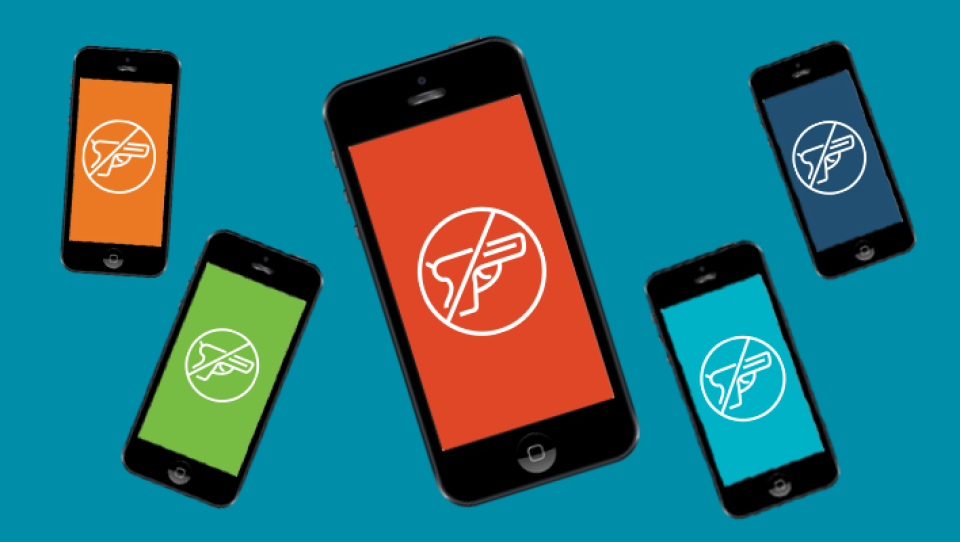Empty pizza boxes were strewn across a table outside of a room at Massachusetts General Hospital's Simches Research Center, where teams spent the better part of a weekend competing in a "hackathon." The hackathon model has been used in recent years to address public health problems from the spread of the Zika virus to the opioid epidemic.
Under dim florescent lights, teams worked late into the night, trying to come up with new ideas to solve what can feel like an intractable problem: How to prevent gun violence.
"I come from Dorchester," Christy Charlot told me. "I relate completely with all of what's going on."
Charlot is 22-years-old, and she was on one of the winning teams — called Dream Alive. As a teenager, she didn't think she would live to see adulthood because of the gun violence in her neighborhood. She was in an abusive relationship with a former gang member, and even though she had lots of supportive family and friends, she didn't know who to turn to for help.
"I couldn't tell my mom that she was going to die if I left someone, or I was going to die. So I stayed with him. I stayed with him so nobody would die," Charlot said.
Charlot and her teammates, who included a social worker and a computer programmer, designed an app that would connect people in need of help to social services and mentors. Charlot said, had this app existed when she was in high school, maybe it could have helped her find her way out of that relationship.
"There are clinicians here, people who work in mental health," said Margaret Seater, a doctor at Mass General who helped out with the hackathon. "We have nurses, a lot of researchers."
This is essentially the public health approach: bringing lots of different people, from lots of different backgrounds, to work together on a problem.
Take the problem we once had of motor vehicle fatalities, which have fallen 85-90%. "It's just an incredible success story," said David Hemenway, a professor at the Harvard T.H. Chan School of Public Health. The school is a leader in efforts to approach a wide range of problems from the public health perspective.
"Cars are so much better than they were 50, 60 years ago," Hemenway said. "We have airbags, we have seat belts, we have collapsible steering columns." The roads are safer, he said, and emergency medical responses have improved. It isn't one quick fix, but lots of smaller ones, that have reduced motor vehicle deaths so dramatically.
Hemenway and other public health researchers would argue, the same approach can be used for gun violence. This strategy, unlike the gun control approach, frames the problem in a way that doesn't immediately turn off many gun owners and gun rights advocates.
Hemenway's colleague at Harvard, Cathy Barber, has been working with gun sellers, firearms instructors, and second amendment rights groups, focusing on the problem of gun suicides.
"I realize that in a sense this type of approach has made me like the world a little bit better," Barber said. When gun enthusiasts are approached as part of the solution, instead of part of the problem, she said the conversation goes a lot better.
Jim Wallace is one of those gun enthusiasts. He works with the Massachusetts Gun Owners' Action League, or GOAL. I asked him what he thought about the Mass General Hospital hackathon, and Dream Alive's app idea.
"Why not?!" Wallace said. He liked the idea of giving younger generations a modern way to access social services, or get help for a friend or family member. In fact, GOAL has proposed a similar thing to the state legislature as an alternative to more traditional gun control measures. But he thinks it needs to be a part of a larger, multifaceted approach.
Wallace said whether it's gun suicides, domestic violence, or gang violence, each of these problems needs its own solution.
"They all take different approaches," he said. "For instance, if you're having a problem with suicide with guns, you're not going to take the same approach as if you have a high homicide rate."
Cathy Barber at Harvard agreed.
"With something like gun injury and gun deaths, there isn't one vaccine that's gonna work," she said. "There isn't one law or one program. So you kind of work away incrementally."
Just like how seat belts, airbags, and crosswalks each solved one part of the motor vehicle problem.




